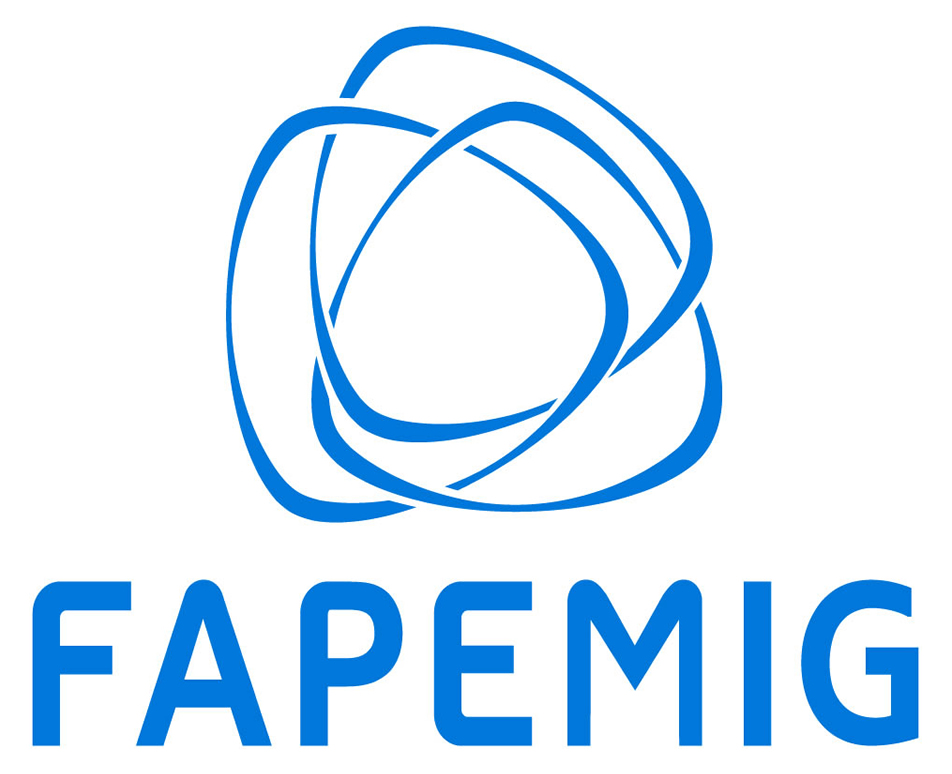Posters
| Category 'G'- Functional Genomics' |
| Poster - G01 |
| DIFFERENTIAL EXPRESSION AND ASSOCIATION MAPPING ANALYSIS OF DEFENSE RESPONSE TO A FUNGAL PATHOGEN IN SUNFLOWER (Helianthus annuus L.) |
| Maximo Rivarola, INSTITUTO DE BIOTECNOLOGIA, INTA CASTELAR, Argentina |
| Sebastian Moschen, INTA, Argentina Norma Paniego, INTA, Jullien Hollman, University of Kiel, Alisdair Fernie, Max Planck Institute, Esteban Hopp, INTA, Ruth Heinz, INTA, Julio Di Rienzo, Universidad Nacional de Cordoba, Argentina Maximo Rivarola, INTA, Sergio Gonzalez, INTA, |
| Short Abstract: Defense response to the fungal pathogen Sclerotinia sclerotiorum is a complex mechanism with many layers of regulation. Many different studies utilizing transcriptomic and/or association mapping approaches are being undertaken to unmask the mechanisms involved in fungal defense response in several species. Even with sunflower’s high agronomic importance, no public draft genome is yet available, rendering genomic/transcriptomic studies to the more difficult de-novo approach. In our study, we took the strategy of using a set of sunflower lines showing phenotypical diversity (resistant or susceptible) in response to S. sclerotiorum head rot disease, and performed differential expression studies using both, microarray analysis and quantitative de-novo RNA-seq at different times after fungal infection. At the same time, QTL mapping was carried out using linkage and association mapping experiments to obtain a list of candidate loci involved in the defense response. Statistical analysis of microarray data using linear mixed models allowed us to detect a collection of several hundred genes exhibiting differential expression in infected sunflower florets at different time points, which constitute the main target of Sclerotinia attack. To validate these results, 58 of these genes were assayed by quantitative real-time PCR, of these 19 were validated. For the transcriptomic approach, we evaluated different assembly algorithms and strategies on our dataset as well as other de-novo transcriptomic assemblies publically available to create a transcriptomic reference for the digital counting task. All of our transcriptomic assemblies were functionally annotated utilizing the gene ontology terms. Furthermore, in order to take into account all effects in our experimental design, we used the generalized linear model (GLM) so as to evaluate contrasts in a more efficient manner. We found that the list of candidate genes by our transcriptomic approach was quiet limited, with most of the up or down regulated loci being strongly associated to the phenology state or the genetic background of the inbred line. Moreover, we did identify approximately 55 loci with specific differential expression to fungal attack and are continuing with more functional enrichment assays to gain further insight. Linkage and QTL mapping was carried out using a population of 123 recombinant inbred lines and an association mapping population of 135 inbred lines from the INTA genetic breeding program. This approach allowed us to identify four candidate loci with significant contribution to the fungal resistance response and 7 QTL. Moreover, we were able to localize 60 SNP loci in the sunflower genetic map. It is our interest to enhance the integration of the approaches described here combining genetic and genomic resources, in particular through functional enrichment, to reach interesting leads on significant loci to head rot resistance. One example is the cell program death pathway which was previously showed to play a major role. The identification of new loci associated to the defense response will help to elucidate molecular mechanisms of disease tolerance in sunflower and develop biotechnological tools for both basic research and breeding applications. |
| Poster - G02 |
| Identification of transcripts processed by Spliced Leader Trans-Splicing in different developmental stages of Schistosoma mansoni |
| Mariana Martins, Universidade Federal de Minas Gerais, Brazil |
| André Luiz Reis, Universidade Federal de Minas Gerais, Brazil Sílvia Regina Costa Dias, Universidade Federal de Minas Gerais, Brazil Núbia Monteiro Gonçalves Soares Fernandes, Centro de Pesquisas René Rachou, Fundação Oswaldo Cruz, Brazil Marina Moraes Mourão, Centro de Pesquisas René Rachou, Fundação Oswaldo Cruz, Brazil Glória Regina Franco, Universidade Federal de Minas Gerais, Brazil |
| Short Abstract: Spliced-leader Trans-splicing (SLTS) is a process that joints the exon of a specialized SL RNA to exons of different pre-mRNA transcripts generating mature mRNAs. We were able to detect several genes processed by SLTS differentially regulated in the distinct stages of the S. mansoni life cycle. |
| Poster - G03 |
| Transcriptional analysis of Corynebacterium pseudotuberculosis biovar equi strain 258 from ab initio assembly |
| Mariana Santana, Federal University of Minas Gerais, Brazil |
| Anne Pinto, Federal University of Minas Gerais, Brazil Rommel Ramos, Federal University of Pará, Brazil Pablo de Sá, Federal University of Pará, Brazil Flávia Aburjaile, Federal University of Minas Gerais, Brazil Adriana Carneiro, Federal University of Para, Brazil Artur Silva, Federal University of Para, Brazil Vasco Azevedo, Federal University of Para, Brazil |
| Short Abstract: Corynebacterium pseudotuberculosis is the pathogen responsible for ulcerative lymphangitis. This disease causes economic losses and researches are being focuses to find treatment for it. Transcriptome studies are important for understanding the biology of the species and suggest possible virulent factors that can be useful to produce vaccine against the disease. |
| Poster - G04 |
| Microarray analysis comparing probiotic and non-probiotic yeast strains: a search for a probiotic signature |
| Priscila Grynberg, Embrapa - Brazilian Agricultural Research Corporation, Brazil |
| Leonardo Lucas Carnevalli Dias, Universidade Federal de São João Del-Rei, Brazil Danielle Fernandes Durso, Universidade Federal de Minas Gerais, Brazil Daiane Marielle de Laat, Instituto Agronômico de Campinas, Brazil Ieso de Miranda Castro, Universidade Federal de Ouro Preto, Brazil Gloria Regina Franco, Universidade Federal de Minas Gerais, Brazil |
| Short Abstract: Probiotics are live micro-organisms that confer heathy-benefits to the host. Microarray analysis were employed to compare yeast cells from the three strains treated or not with pH 2.0 and 86 mM NaCl for 10 min, in an attempt to understand the similarities and differences between probiotic and non-probiotic yeasts. |
| Poster - G05 |
| RNA-Seq analysis for identification of operons in the genome sequence of Herbaspirillum seropedicae SMR1 |
| Rose Adele Monteiro, Universidade Federal do Paraná, Brazil |
| Helba Barbosa, UFPR, Brazil Leonardo Cruz, UFPR, Brazil Helisson Faoro, UFPR, Brazil Michelle Tadra-Sfeir, UFPR, Brazil Fábio Pedrosa, UFPR, Brazil Emanuel Souza, UFPR, Brazil |
| Short Abstract: Herbaspirillum seropedicae SMR1 is an endophytic bacteria found in association with plants of economic interest. Its genome contains 4,804 genes. Sequence analysis and RNA-Seq data sets in 10 different conditions were used to determine the operon structure in H. seropedicae SmR1 genome. |
| Poster - G06 |
| An RNAseq computational pipeline applied on angiogenesis transcriptome data |
| Rodrigo Sousa, University of São Paulo, Brazil |
| Jussara Michaloski Souza, University of São Paulo, Brazil Laura Beatriz da Silva Cardeal, University of São Paulo, Brazil Joao Carlos Setubal, University of São Paulo, Brazil Ricardo Jose Giordano, University of São Paulo, Brazil |
| Short Abstract: We developed a computational pipeline to analyze rich sets of RNA-seq data and applied it to a transcriptome dataset aiming to search new therapeutical targets that may be used in clinics. |
| Poster - G07 |
| Expression Levels Of Kpna Genes In Human Embryogenegis |
| Agnes Takeda, Universidade Estadual Paulista Julio de Mesquita Filho - UNESP, Brazil |
| Jose Luiz Rybarczyk-Filho, Universidade Estadual Paulista Julio de Mesquita Filho - UNESP, Brazil Ney Lemke, Universidade Estadual Paulista Julio de Mesquita Filho - UNESP, Brazil |
| Short Abstract: The Homo sapiens genome has seven Importin-alpha genes (KPNA1-7) and their expression during the embryogenegis its one of the hypothesis that ImpA can act as an important mediator for cellular differentiation and maintenance. This work proposes the analysis of KPNA expression in a dataset of Homo sapiens embryonary stages. |
| Poster - G08 |
| Funcional genomics of Propionibacterium freudereichii |
| Flavia Figueira Aburjaile, INRA/UFMG, Brazil |
| Leandro Benevides, UFMG, Brazil Marcus Viana, UFMG, Brazil Rommel Ramos, UFPA, Brazil Hélène Falentin, INRA, France Yves Le Loir, INRA, France Artur Silva, UFPA, Brazil Vasco Azevedo, UFMG, Brazil |
| Short Abstract: Propionibacterium freudenreichii has a great biotechnological importance in the manufacture of cheeses. The strain P. freudenreichii CIRM-BIA 138 is known to survive for long periods in nutritional shortage. In this context, we seek to understand the biological processes which are involved in this response to bacterial survival in atypical conditions. |
| Poster - G09 |
| A pipeline for assembly and annotation of venomous arthropod transcriptomes from Midwest Brazil |
| Taina Raiol, University of Brasilia, Brazil |
| Rafael Costa, University of Brasilia, Brazil Joao Oliveira, University of Brasilia, Brazil Thalita Camargos, University of Brasilia, Brazil Marcelo Brigido, University of Brasilia, Brazil Maria Walter, University of Brasilia, Brazil Taina Raiol, University of Brasilia, Brazil Marcia Mortari, University of Brasilia, Brazil Elisabeth Schwartz, University of Brasilia, Brazil |
| Short Abstract: The study of arthropod venom found in Central Brazil provides a range of possibilities for the discovery of new medicinal compounds. In this work we presented a computational pipeline for arthropod transcriptome analysis, finding toxin functions that will help to expand the current venom database. |
| Poster - G10 |
| In silico investigation of the role of pseudogene POLHP1 |
| Francisco Ivanio Alves, University of Sao Paulo, Institute of Biomedical Sciences, Brazil |
| Fábio Navarro, Hospital Sírio-Libanês, Brazil Pedro Galante, Hospital Sírio-Libanês, Brazil Ligia Castro, Universidade de São Paulo, Brazil Carlos Menck, Universidade de São Paulo, Brazil |
| Short Abstract: This work analyzed the POLHP1 pseudogene sequence, and its preservation in primates. Further investigation may elucidate whether it has any role in DNA damage response. |
Posters
Poster Presentation List & Schedule
Odd numbers:
Poster set up: Day 1 - all day long
Take down: Day 2 after Poster Session
Size: Up to 90cm width x 120 cm height
Even Numbers:
Poster set up: Day 2 after Poster session and Day 3 until the first coffee break
Take Down: Day 3 after Poster Session
Size: Up to 90cm width x 120 cm height
| View Posters By Category |
- A) Bioinformatics of Disease and Treatment
- B) Bioinformatic tools and databases
- C) Computational aspects
- D) Comparative Genomics
- E) Education
- F) Epigenetics
- G) Functional Genomics
- H) Genome Organization and Annotation
- I) Genetic Variation Analysis
- J) Metagenomics
- K) Pathogen informatics
- L) Population Genetics Variation and Evolution
- M) Protein Structure and Function Prediction and Analysis
- N) Proteomics
- O) Sequence Analysis
- P) Systems Biology and Networks
- Q) Other
| Search Posters: |
TOP






